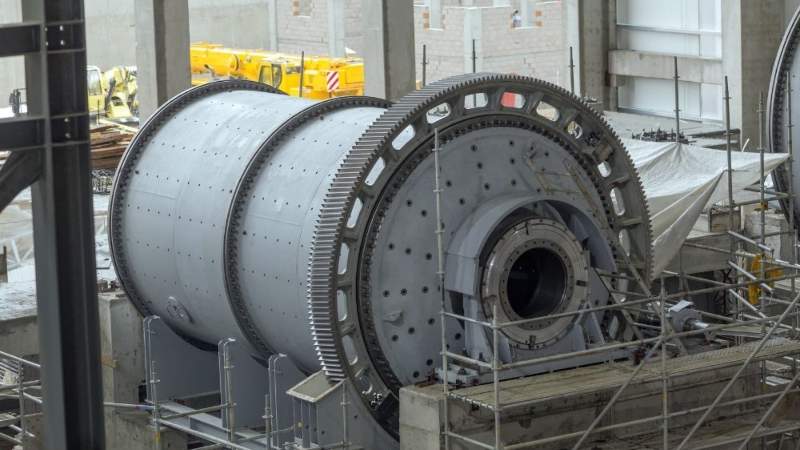The pursuit of efficiency in mineral processing is a never-ending quest, particularly within the domain of grinding and milling operations. Achieving optimal milling performance is pivotal for mines seeking to improve their productivity and cost-effectiveness. One major component that plays a critical role in this process is the ball mill liner. Innovative solutions in this area not only enhance the efficiency of mineral processing but also extend the life of mill equipment, thus offering a two-fold advantage to the industry.
Understanding the Role of Ball Mill Liners
At the heart of mineral processing, ball mills grind ores into finer particles that can be more readily processed to extract valuable minerals. The liners inside the mills protect the mill shell from the impact and wear caused by grinding media and the ore itself. High-quality liners, adapted to the specific needs of the mill and ore being processed, are crucial for achieving the best milling performance.
Types of Ball Mill Liners
There are different types of ball mill liners, each offering distinct benefits. They vary in design, material, and profiles to cater to a variety of milling conditions and ore characteristics. Some common types include wave liners, lifter bars, and shell plates, which can be made from steel, rubber, or composite materials.
Impacts of Liner Choice on Mill Efficiency
The choice of ball mill liner significantly affects the efficiency of the mill. The right liner not only protects the mill shell but also influences the lifting and trajectory of the grinding media, which in turn determines the grinding efficiency, throughput, and the wear rate of the liners themselves.
Advantages of Optimised Liner Design
Innovative liner designs are tailored to increase the effectiveness of the milling action, improving the contact between the ball and ore, and reducing energy wastage. Enhanced designs facilitate better power transfer, reduced energy consumption, and improved milling performance.
Furthermore, well-designed liners contribute to lower maintenance frequency, reducing downtime and the costs associated with shutdowns.
Material Innovations in Liner Technology
The evolution of materials used in liner construction has also had a positive impact on mill efficiency. High-wear resistance and flexibility are key characteristics sought in liner materials. Advancements have led to the development of composite liners that combine the strength of steel with the cushioning effect of rubber, striking a balance between durability and shock absorbance.
The Shift towards Sustainable Milling
There has been a shift towards sustainable milling, where reducing the environmental impact of mineral processing is a priority. Innovative liner solutions contribute to this by reducing energy consumption and the frequency of liner replacements. Liners that offer longer service life and are made from recyclable materials are increasingly favoured for their eco-friendly attributes.
Customisation of Ball Mill Liners for Enhanced Performance
With advancements in simulation technology, the customisation of liners has become more precise. Customised liner design allows a mill to operate at its full potential by taking into account factors such as the size and geometry of the mill, ore characteristics, and the targeted grind size.
3D Modelling and Simulation in Liner Design
3D modelling and wear simulation tools allow engineers to predict the performance of a liner design accurately. They can simulate the impact and wear patterns in a mill, enabling them to optimise the liner shape and material to enhance efficiency and extend wear life.
Installing and Monitoring for Optimal Function
The installation of ball mill liners is as critical as the design and material. Proper installation ensures that the liners sit correctly against the mill shell, preventing slurry leakage and wear spots.
Equally important is ongoing monitoring. Technological advancements have led to the development of wear-monitoring systems that can alert operators to the condition of liners, enabling predictive maintenance and pre-emptive liner changes when necessary.
Maximising Mill Availability with Strategic Liner Replacement
Strategic replacement of liners is crucial in maximising mill availability. Thorough planning and execution of liner replacement schedules, utilising periods of scheduled downtime, are essential. This approach minimises unscheduled stoppages and maintains a high level of operational efficiency.
Collaboration with Experienced Liner Suppliers
Strong collaboration between mining operations and experienced liner suppliers, such as those providing high-quality ball mill liner solutions,s is invaluable. Suppliers with proven track records understand the complexity of mill operations and can provide customised solutions that enhance mill performance and longevity.
They supply liners that are not only efficient but also cost-effective in the long term, owing to their durability and reduced need for frequent replacement.
Conclusion
In conclusion, advanced ball mill liners are vital for mineral processing. They protect mills, boost grinding, save energy, and support sustainability. Investing in quality liners is key to staying competitive in the industry.
By integrating cutting-edge design, material innovation, and strategic implementation, mines can reap the benefits of increased milling efficiency and overall profitability. It is an investment that delivers tangible results, paving the way towards a more efficient and environmentally conscious mineral processing industry.

